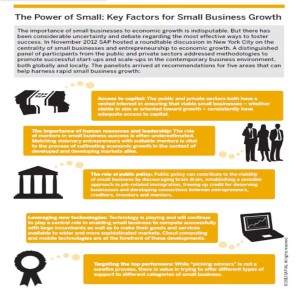By Katja Schroeder, Expedition PR
Frank Sinatra knew about it. He even dedicated a song to it. New York City attracts people who have the perseverance to turn their dream into a reality. You not only meet these “kings of the hill” on Wall Street or Broadway; many of them are entrepreneurs who started a business in one of the city’s five boroughs.
“It’s like the song, if you can make it in New York, you can make it anywhere,” believes Amy Noelle, founder of Sugar Flower Cake Shop.
Amy is one of the 200,000 entrepreneurs who set up her cake shop offering cakes that feature realistic-looking flowers handmade from sugar, in New York City. She was also among the first groups of entrepreneurs who went through the Kauffman FastTrac® program, a business crash course administered by the SUNY Levin Institute. Initiated by NYC Business Solutions, under the leadership of Mayor Michael Bloomberg, and the Ewing Marion Kauffman Foundation in 2008, the program has helped thousands of entrepreneurs to start, run and grow their business. It is one of many programs and resources that the City of New York has to offer for small and medium-sized enterprises (SMEs).
There is a good reason for that. Small businesses employ more than half of New York State’s private sector workforce. New York City has more than 200,000 small businesses, making up 99 percent of all New York businesses, according to the Small Business Development Center (SBDC). In addition to its strong media & entertainment, finance, fashion and services industries, New York has seen a renaissance in manufacturing, including specialty food producers and sustainable consumer products businesses.
But even with support and infrastructure, running a business is not a cakewalk.
According to a recent survey by enterprise software leader SAP, conducted between November 2012 and January 2013, New York City-based SMEs are struggling with expensive commodities and talent, sky-high rents, and burdensome taxes. The purpose of the survey was to identify potential growth hurdles for New York’s small and mid-sized businesses.

Figure 1: SAP Survey 2013. What are the top three business growth obstacles? Source: SAP
Survey respondents stated that the key obstacles for future business growth are the rising costs of commodities and other inputs (43 percent), the growing tax burden (33 percent) and growing competition (33 percent) (see figure 1).
One way to stay competitive is to keep operations lean. About 63 percent of the survey respondents said that they are using technology to become more efficient, such as the use of sales management and point of sales (POS) systems. Businesses use cloud computing to save and share files as well as mobile solutions for payments.
But even the leanest of all operations needs capital to spur growth. Although cost cutting can help with survival, it does not lead to innovation. In addition, some of the most promising business sectors, including biotech, nanotech, clean tech and manufacturing, require large capital investments often for many years before reaching profitability. The Small Business Administration provides loan guarantees to expand the availability of capital to promising small businesses. However, most small businesses in New York City surveyed have become more worried about access to finance and the potential for debt. It is not easy to obtain capital at a good rate.
Access to capital was also a highly debated topic at the SAP SME Summit (see figure 2). SAP had invited experts from sector to discuss best ways to support the growth of small businesses. The panelist agreed that the private and public sectors have a common interest in facilitating the access to capital for SMEs. Giving small businesses the opportunity to borrow from a single lender at low cost can spur company growth, and thereby, job creation.

The goal, concluded the panelists, should be to free up credit for viable and high-potential businesses and develop connections between entrepreneurs, creditors, investors and mentors.
With job creation being a topic priority, chances are that the public sector will adjust existing programs and find new ways to ease the access to capital. It will also be interesting to see how crowd-funding will evolve as a more mature sourcing tool for investors.
Whatever the future will bring, it is safe to say that perseverance and resourcefulness will continue to be among the traits of a successful entrepreneur in New York.
To download the survey The Power of Small – Insights from New York City’s Entrepreneurs – click here.
Disclosure: SAP is a client of Expedition PR and the agency assisted with the development of the survey.